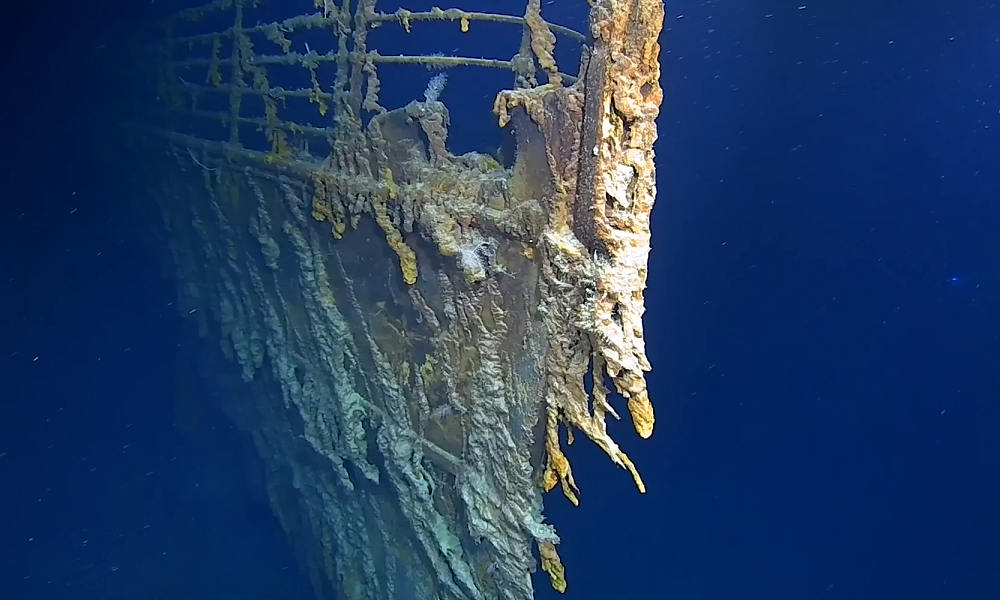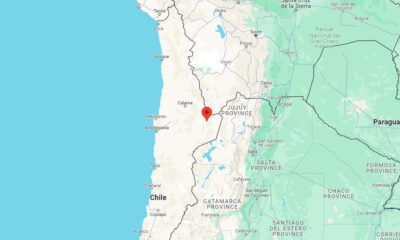Video
First dive to Titanic in 14 years shows wreck is deteriorating
The condition of the RMS Titanic is deteriorating, according to an international team of deep-sea explorers which visited the wreck on the bottom of the North Atlantic Ocean, where it sank in 1912 after hitting an iceberg. It marked the first manned dive to the ship in 14 years.
The team of explorers and scientists used a two-person deep-submergence vehicle called Limiting Factor to reach the wreck on the bottom of the North Atlantic Ocean, about 370 miles (595 kilometers) south of Newfoundland, Canada. A total of five dives were made over a period of eight days.
The scientists of the expedition plan to publish the full results at a later date, alongside a documentary film which is being made by Atlantic Productions in London. Some of the first results and images were published on Wednesday, which shows that the wreck’s condition is deteriorating.
“The most shocking area of deterioration was the starboard side of the officer’s quarters, where the captain’s quarters were,” said Titanic historian Parks Stephenson, who was part of the team. “Captain’s bath tub is a favorite image among the Titanic enthusiasts, and that’s now gone. That whole deck hole on that side is collapsing, taking with it the staterooms, and the deterioration is going to continue advancing.”
Lying almost 4,000 meters (13,123 feet) down in water of about 1°C (33.8°F), the wreck is vulnerable to sweeping eddies, ever-changing sea currents, salt corrosion, and metal-eating bacteria.
“The future of the wreck is going to continue to deteriorate over time, it’s a natural process,” scientist Lori Johnson said. “These are natural types of bacteria, so the reason that the deterioration process ends up being quite a bit faster, is a group of bacteria, a community working symbiotically to eat, if you will, the iron and the sulphur.”
Atlantic Productions said the team used specially adapted cameras to capture the wreck in a way it’s never been seen before, in native 4K footage. They also performed dedicated photogrammetry passes on the wreck, allowing highly accurate and photoreal 3D models of Titanic to be produced. This will help to assess the wreck’s current condition, project its future, and makes it possible to visualize the wreck using augmented reality (AR) and virtual reality (VR) technology.
The RMS Titanic, once called “unsinkable” and at the time the world’s largest ship, sank in April 1912 when it struck an iceberg in the North Atlantic Ocean during its maiden from Southampton, England, to New York City. More than 1,500 of the 2,224 people on board were killed, making it one of the deadliest marine disasters in history.


-

 World1 day ago
World1 day agoU.S. and China report 3 more human cases of bird flu, UN calls for urgent action
-

 Legal1 week ago
Legal1 week agoMan arrested with AK-47 near Republican convention in Milwaukee
-

 Politics7 days ago
Politics7 days agoU.S. Rep. Sheila Jackson Lee dead at 74
-

 Legal7 days ago
Legal7 days agoFlorida man arrested for threatening to kill Trump and Vance
-

 World1 week ago
World1 week ago7.4-magnitude earthquake hits northern Chile
-

 Legal5 days ago
Legal5 days agoAt least 19 people shot, 3 killed, outside Mississippi nightclub
-

 World1 week ago
World1 week agoCyanide found on tea cups after 6 people die at Bangkok hotel
-

 Legal7 days ago
Legal7 days agoTexas Amber Alert: 2 children last seen in Bastrop County



